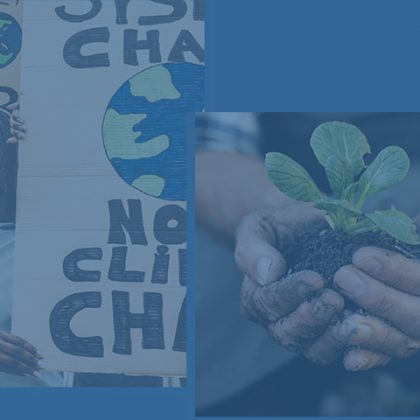Conversations with Authors: Institutionalized Police Brutality
This is the first post in our new series: “Conversations with Authors.” For our inaugural post, we asked Dr. Vesla Weaver to meet (virtually) with Dr. Beatriz Magaloni and Ph.D. student Luis Rodriguez to discuss their recently published APSR article. We hope you enjoy!
VW: We are here today to discuss an extraordinarily important, breathtaking article. The piece is “Institutionalized Police Brutality: Torture, the Militarization of Security, and the Reform of Inquisitorial Criminal Justice in Mexico.” The piece touches on so much, and we are lucky to have Beatriz Magaloni & Luis Rodriguez today.
Before we get to some of my specific questions, I just wanted to mention that the central argument and key finding is that the shift from the inquisitorial legal system to an adversarial legal system transformed the use of torture. Basically, it shifts the system so that there was much more due process for the defendants, much more protections and less reliance on confessions that often entailed torture and intimidation of witnesses. And that this single shift caused a dramatic decline in the use of police torture; but–and the second and just as important finding–that those reforms were delimited by the militarized intervention of the drug war. What puzzles or ideas or observations led you to this research? And what are some of the epiphanies you had along the way?
BM: Thank you so much for your comments and your reading of our paper! Beginning with the puzzles, I want to start by emphasizing the nature of inquisitorial justice, because it is very hard to imagine really what it entails until you observe it. I’m a lawyer by training before I became a political scientist, and what I observed of inquisitorial justice comes from first-hand experience with criminal trials in Mexico. This is almost 30 years ago and what I observed then is just beginning to change with the recent criminal justice reforms.
In Mexico’s inquisitorial system issues about crime and punishment, freedom and reparation were all decided on the basis of what the investigative police and the prosecutors “said” happened in a written document called the “Averiguación Previa”. That was basically all the “evidence” that was offered in a trial and it was often fabricated, including through coerced confessions and intimidation of witnesses. Judges were never present in the trials and they basically would endorse in their rulings whatever was written in the “Averiguación Previa”. The accused was behind bars, and often these were covered with translucent plastic so that they could barely hear behind those bars. Almost everyone was convicted. I remember that one of my professors in law school would advise us to “Never allow your clients to ever reach the public ministry because if you get to that place, there is hardly a way out.” He obviously was recommending to give bribes to the police so that “our clients” would not be taken there. This course of action was only accessible to those who had money. So basically, the system severely punished poverty, and also likely prosecuted and convicted so many innocent people who simply were unable to “prove their innocence” in court. The system presumed everyone was guilty.
The main puzzle in our paper relates to understanding the challenges to transform this brutal system, which continued to operate years after Mexico transitioned to democracy. In 2008 there was a massive reform of criminal justice, a constitutional reform that obliged every state to abandon the inquisitorial system and adopt radically different criminal procedures to enhance due process protections and introduce judicial checks during the pre-trial phase. Our puzzle in this paper is “Can the system of institutionalized police brutality be changed through this type of institutional reform?” When we started writing the paper we didn’t really have an answer, but we suspected that the reform had produced important changes. In parallel I was conducting interviews with police officers in three cities in Mexico and these interviews revealed that police were changing their behavior. For example, they reported that they could no longer take arrested people to the police headquarters to interrogate them without a lawyer.
LR: Maybe contrary to Beatriz, I came into this with some cautious skepticism about the extent to which a reform was going to create substantive change with this kind of deeply ingrained, institutionalized problem. And what became very clear to me throughout the process of writing this paper was that this was a reform that—perhaps unintentionally–targeted the way that the legal system kind of laundered and legitimized and endorsed extreme violence.
VW: One of the things that I was so struck by in the work is the descriptive statistics. So just how unbelievably common torture–not just “I was slapped once,” but actual torture, which you define—police have to find a space for it to take place; it almost is premeditated. I mean, upwards of 60% of the sample is reporting being exposed to some of these practices. Can you talk about that finding? I also notice the high percentage of the sample whose crime was theft. And you make a note that it basically means that they’re punishing poverty. Can you unpack that a little bit? Did the composition of who was being tortured and for what offense change after the reform as well?
BM: I really want to take a pause here because to me it is heartbreaking. Through the years, so many people were tortured and then sent to prison because of theft! The horror is unspeakable. Our paper uses a survey of a representative sample prisoners in the entire country. It is important to highlight here that there are other sources, although not as representative, that have revealed that torture is endemic in Mexico, including Amnesty International and Human Rights Watch. The special rapporteur on torture to the UN Human Rights Council pointed out in his report that torture in Mexico was a “generalized practice”. There are also numerous complaints of torture before the National Human Rights Commission. We know from other sources that this is happening. But in our opinion, the prisoners are the most reliable source because torture happens in the shadows, in the dark, in the basements of clandestine detention centers, and because of that those who experienced it are the best to tell us what happened there. The point is that we want to fully acknowledge those voices.
A representative sample of the prison population in Mexico allowed us to document this brutal practice –torture — with unusual levels of precision. And we are in that way very thankful that the National Statistical Office (INEGI) decided to pursue this survey in Mexico. It’s tremendously important. I just want to share with you that even the Mexican Supreme Court acknowledges the history, our history with torture: In the entrance of the building, there is a stunning set of murals by Rafael Carduro that extend through three floors of a stairway reflecting a brilliant depiction of the lack of justice in the country with many images of torture at the hands of a brutal and repressive system. The images are surreal, very moving, and disturbing.
LR: I can take up the second half of the question where you ask more directly whether you see changes in the behavior around theft after the reform. One thing that we struggled with quite a bit was that we kept getting comments suggesting that after the reform, if it’s really constraining police behavior, you should expect them to be arresting fewer people where the evidence would be weaker. And we do find that the composition of our sample does change that way – fewer people in our sample have been arrested for theft after the reform.
VW: Beatriz, you had mentioned here’s this data set that allows us to see something that we all kind of knew was going that, but we didn’t have that hard data on. You can’t observe torture. How do you observe a disappearance beyond family members saying this happened? And it reminded me of your research just being an incredible example of how to do research on a subject that is incredibly difficult. I was thinking of Javier Auyero and Katherine Sobering’s book The Ambivalent State where they say “How do you get at that which was never intended to be seen, read, or examined?”
It’s a very big deal that the institutional reforms actually changed police behavior, insofar as we can assume police behavior is being proxied for by actual citizen reports of abuse. You find that it declines, police torture declines as reported by citizens, declines up to 23% due to the reforms. But I was actually surprised by how much it remains pervasive. So, how is this explained–so it doesn’t diminish, we see a sharp decline, but it’s not the case that it even asymptotically approaches zero–it’s still very much a practice, and so I kept thinking, how is this explained?
BM: Yeah absolutely, thank you for that question. We do highlight that in the conclusion, there is optimism, but we still observe that high levels of brutality persist. We offer some speculation. First, the reliance on torture and fabrication of evidence created a very perverse path dependency on the part of investigative police and prosecutors. These institutions never invested in developing the capacity to investigate, they don’t know how. There are no protocols, no scientific practices that police use to investigate crimes –really literally. This means that if they don’t use torture, they often just cannot prosecute and convict. The lack of capacity to investigate also creates a huge problem with impunity, which is tragic considering how endemic crime and violence are in Mexico today. This raises the question of why the local judiciary is not imposing more restraints on malicious policing practices. Luis and I think that this should be one of the next steps in the analysis: how the local judiciaries — which are really the main institutional actors here – are behaving with respect to imposing limits on police.
VW: I found myself wondering whether police engaged in workarounds once the reform was rolled out.
BM: Yes.
VW: So the reform is rolled out and it constrains the most extreme aspects of institutionalized torture. I was thinking about the United States, and the pattern here has been that the expansions of procedural norms meant that the system itself expanded, and the abuses shifted to other areas that were harder to discern. More subterranean, or harder to regulate. Like prosecutors engaging in overcharging behavior. Is there any evidence that new and more robust procedural safeguards lead to this kind of pattern I’m pointing to? Maybe suspects aren’t being taken to clandestine warehouses to be tortured, but they are being coerced in other kinds of ways that don’t leave bruises?
BM: At the state level In Mexico there is huge variation that we will need to investigate. A recent paper by Dorothy Kronick and David Hausman, they find some evidence for the case of Venezuela that police start to engage in extrajudicial killings because they cannot prosecute as a result of the introduction of more procedural limits. We do not know whether this is going to happen in some places in Mexico, but in our interviews we did observe a lot of frustration on the part of the police: they often blame the new criminal justice system because it “protects criminals too much” and because it “lets them go free”. That worries me because those police, as you are mentioning, might seek to go around the reform. Another backlash might come from pressures from civil society, with the perception that–and this is really something that Luis and I want to explore further—the reform might be “too protective of criminals.” We worry that on the one hand, people who are very fearful of crime might sort of endorse police brutality. Of course, another problem is that all of this happens in the shadows, in the darkness of clandestine detention centers, which means that it is impossible for civil society to truly know what is going on, to understand the brutality of the system. This means that mechanisms of electoral accountability might be extremely deficient in this case. These are critical questions, very important topics for further research.
VW: So were there any counterintuitive findings that you would like to explore further, or, give readers a sense of where you’re going next in your research? What were some of the grey areas that you thought deserve a lot more research attention?
BM: Great, I think very immediately we are right now working on a second paper that was originally in this version and then we realized that it was too much for one paper. It is about how democratization at the local level affected torture. We found, surprisingly, that when the PRI first lost power, this helped to reduce torture, at least in the beginning. But then the drug war comes and this reverse. So are really puzzled by that result, and it seemed to be very solid.
So unfortunately, we end up here with some pessimism. The human rights literature has a strong finding that democracy restrains state repression. We cite that literature in the paper, and then we are really puzzled by the fact that it actually doesn’t. And especially these decentralized abuses by the police that might become even worse in democracies. Vesla, I love the way you frame your work in the US, highlighting how profoundly undemocratic this country is with respect to policing and criminal justice. It is important to think about these problems as embedded in many democratic societies broadly speaking. And so, comparing the United States with Brazil, Mexico, South Africa, Nigeria, is really the right approach. I’m so happy to be able to have this conversation with you!
VW: And that’s why I’m so grateful for the conceptual innovations that you’re giving us and that you are not–you know, one of my frustrations studying police violence and policing in the United States has been that it tends to be studied in this like, corner over here by people who know a lot about the criminal justice system. But not by scholars who are theorizing democracy! And these questions are not in isolation from democracy. You’re absolutely right that these abuses. as are we all seeing before our eyes in this country, are quite consistent with and co-habit with democracy and have always done so in this country. And yet we haven’t, we haven’t yet theorized them as actually a violation of democratic practice.
BM: Absolutely.
BM: Beatriz Magaloni, Ph.D., is a Professor in the Department of Political Science and Senior Fellow at the Freeman Spogli Institute (FSI) for International Studies at Stanford University. A former lawyer in Mexico, her work focuses on state repression, police violence, and human rights work. She is the founder of the Poverty, Violence, and Governance Lab (POVGOV) within FSI. Her work has been published in the American Journal of Political Science, the American Political Science Review, the Journal of Theoretical Politics and more.
LR: Luis Rodriguez is a PhD Student in the Department of Political Science and Researcher at the Poverty, Violence, and Governance Lab at Stanford University. His work focuses on crime, state capacity and violence within Latin America, and he approaches this work through an embrace of quantitative methodology.
VW: Vesla Weaver, Ph.D., is the Bloomberg Distinguished Associate Professor of Political Science and Sociology at Johns Hopkins University. She is a leading scholar on the study of the rise of the carceral state, punishment, and racial inequality in the United States. She has published in the American Political Science Review, the Journal of Race, Ethnicity and Politics, The Journal of Politics, Perspectives on Politics, among others, and has co-authored multiple books, including the award winning “Arresting Citizenship: The Democratic Consequences of American Crime Control” with Amy Lerman.
Magaloni and Rodriguez’s APSR paper is available free of charge until the end of January 2021.






